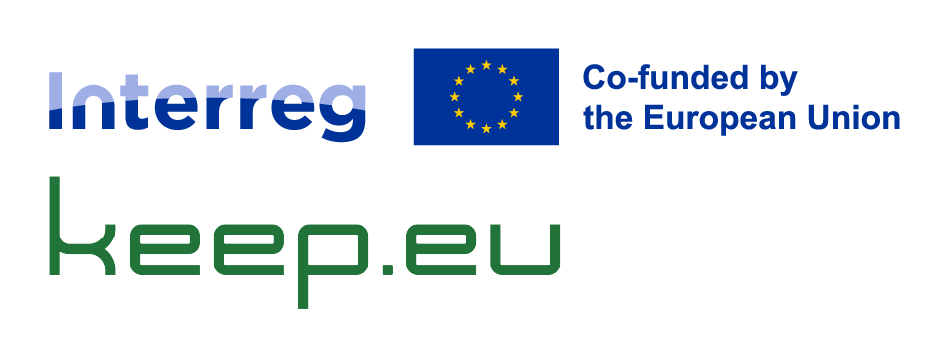News from keep.eu
A key function of a knowledge management tool such as keep.eu is to enable its …
At Interact, we know that many keep.eu users go straight to the Statistics …
Last week marked an exceptional breakthrough: More than 99% of all Interreg …
Now you can seamlessly embed keep.eu data into your digital platform. The new …
-
2025-09-18
Have you noticed that keep.eu is much faster?
-
A key function of a knowledge management tool such as keep.eu is to enable its users to work with the data it contains as easily as possible.
For this reason, all data in keep.eu’s database that is not subject to privacy limitations can be exported to Excel or CSV. This includes data on programmes, projects, partners, and the tens of thousands of project documents featured in keep.eu.
Given the size of these datasets, export times had gradually become very long. This has now been corrected. Data exports are significantly faster. They may never be as fast as we would ideally like, but if you are a frequent keep.eu user, you will appreciate how much quicker downloads are now. -
2025-09-16
Statistics in keep.eu back online
-
At Interact, we know that many keep.eu users go straight to the Statistics section. It is a valued part of keep.eu, where users can explore figures such as Interreg investments in their region per capita and per area, or see which countries cooperate most with each other, among many other insights.
We are therefore pleased to announce that, after being offline for a few months due to technical difficulties, the Statistics section is now back online at https://keep.eu/statistics. Thank you to all users for your patience, and our apologies for any inconvenience caused while this section was unavailable.
As always, do not forget to check the Representativeness section of keep.eu at https://keep.eu/representativeness/. It offers a selection of figures and is the only source of regularly updated estimates on the number of projects and partners in Interreg. -
2025-01-24
Virtually 100% of 2014-2020 projects in keep.eu
-
Last week marked an exceptional breakthrough: More than 99% of all Interreg projects from the 2014-2020 are now in the keep.eu database which means a virtual (rightly rounded up) 100% representativeness rate. To all the programmes who have contributed their data, this victory belongs to you. Congratulations on your role in achieving this remarkable milestone!
-
2024-11-14
Keep.eu API just launched
-
Now you can seamlessly embed keep.eu data into your digital platform. The new keep.eu API allows stakeholders to access keep.eu’s extensive datasets directly, making it easy to incorporate into their own online tools up-to-date information about Interreg and IPA-IPA cross-border projects, partners, and programmes. This integration can support features like interactive maps, data visualisations, and statistics that reflect the latest information from keep.eu, thus helping Interact stakeholders enhance their platforms with detailed and current content relevant to their audiences.
-
2024-04-11
Project ACROSS
-
The European Commission launched the new data hub for European Union border regions last month. This powerful tool provides standardised geo-located data on cross-border interactions alongside robust socio-economic indicators. Known as project ACROSS, the platform is accessible through a user-friendly interface featuring interactive data visualisation available here.
Project ACROSS further underscores the importance for Interreg programmes to include their project and partner data in keep.eu. As one of the few platforms linked to the ACROSS website, keep.eu plays an important role in amplifying the visibility and utility of cross-border initiatives. -
2023-08-04
Keep.eu’s data for networking and thematic capitalisation
-
One of Interact’s fields of work is the promotion of networking and thematic capitalisation, not only within Interreg but also in a broader scope, encompassing other sources of funding (ESF, Horizon Europe, among others) in such a way that Interreg results feature in the broader EU policy picture. The goal is to magnify the value of project results, namely by identifying prospect connections among programmes and funding sources, and by pinpointing project chain possibilities.
Inclusive growth is one of the thematic fields that is dearest to Interreg. After all, Interreg itself is based on the premise that no one is to be left behind.
Interreg alone has rolled out tens of thousands of projects throughout the years. The resource of capitalisation to tools such as keep.eu is therefore unavoidable, as sources of qualitative and quantitative data. Recent examples of capitalisation studies all resort to keep.eu. Among them, the following outputs should be highlighted, given the current importance of the themes that are their focus:
– Youth and employment opportunities (May 2022). Please refer to: https://www.interact-eu.net/library?title=&field_fields_of_expertise_tid=All&field_networks_tid=82#3849-report-youth-employment-opportunities-eu-cooperation-2014-2020.
– Access to healthcare (May 2022). Please refer to: https://www.interact-eu.net/library?title=&field_fields_of_expertise_tid=All&field_networks_tid=82#3900-infographics-access-healthcare.
– Promotion of healthy aging (September 2022). Please refer to: https://www.interact-eu.net/library?title=&field_fields_of_expertise_tid=All&field_networks_tid=82#4069-full-report-healthy-and-active-ageing-interreg-2014-2020.
– Skills for a quality job (August 2023). Please refer to: https://www.interact-eu.net/library#4276-report-skills-quality-job-interreg-2014-2020.
Please refer to Interact’s library for more material on inclusive growth and the inclusive growth network, at https://www.interact-eu.net/library?title=&field_fields_of_expertise_tid=All&field_networks_tid=82, and for material on capitalisation in general, at https://www.interact-eu.net/library?title=&field_fields_of_expertise_tid=18&field_networks_tid=All. -
2023-02-24
Keep.eu recorded the first 2021-2027 Interreg project data
-
Keep.eu recorded the first 2021-2027 Interreg project data yesterday, 23 February 2023, from cross-border programme Austria-Germany/Bavaria.
The keep.eu team has been keeping track of all Interreg programmes’ calls, and many more data are being prepared for importing into our database.
To find out at any time how much data there is in keep.eu on 2021-2027 Interreg, go to keep.eu’s representativeness page.
